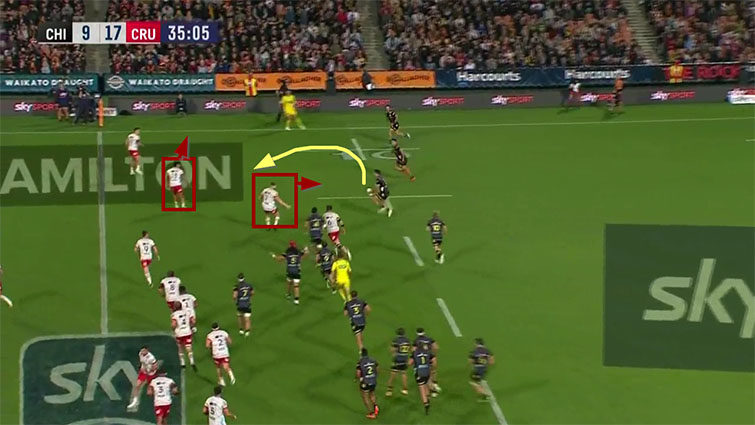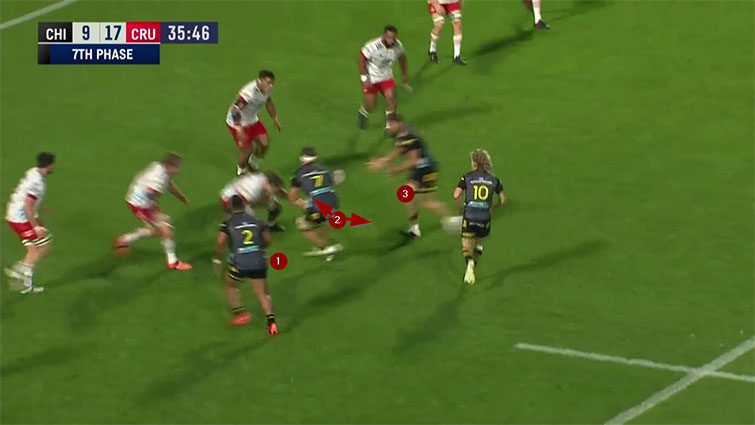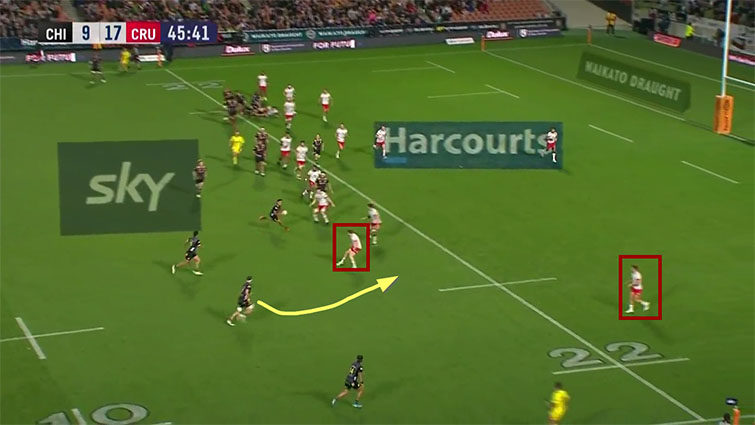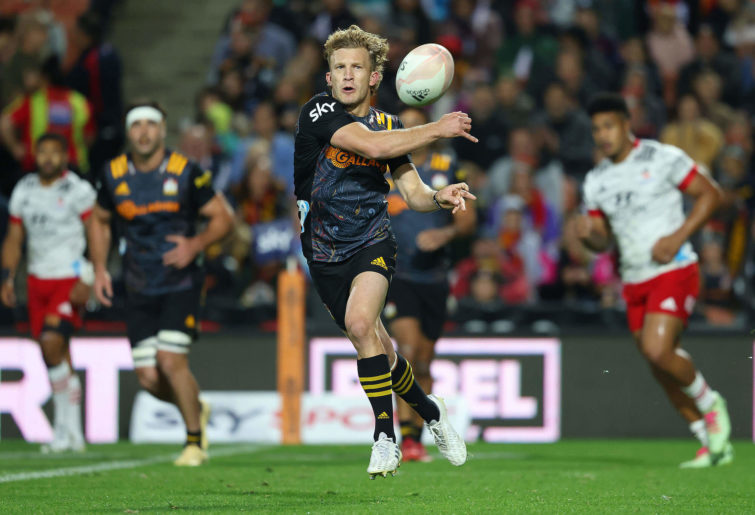It is an exciting time for rugby in New Zealand and Australia.
A brand spanking new Trans-Tasman competition kicks off on May 14, with a quarantine-free air bridge underwriting it. That marks the beginning of a new era of co-operation between the two countries.
All the politicking and backbiting shed by the collapse of the old Super Rugby now seems to be just a dim memory, if the idyllic pictures of New Zealand Rugby CEO Mark Robinson and then-RA interim boss Rob Clarke walking together on Manly beach last November are to be believed.

(Photo by Cameron Spencer/Getty Images)
Super Rugby Trans-Tasman not only fills a yawning gap in the rugby calendars of both nations, it looks to offer a solid foundation for the future of the Antipodean game in the tier between provincial and Test rugby.
The recent announcement of the inclusion of two Pasifika teams in 2022 reinforces the sense that, at long last, something real and sustainable is happening in the administration of the game in the south.
When announcing the Trans-Tasman competition, Robinson was right to be delighted at the outcome.
“Super Rugby Trans-Tasman is a great result for fans on both sides of the Tasman and is testament to the strength of the relationship between New Zealand Rugby and Rugby Australia,” he said at the time.
“It has been a testing time for rugby in both countries, but also a chance to reimagine the game in our part of the world for 2021. The result is an exciting and innovative new competition, which will benefit fans, players, broadcasters and Super clubs.”
Clarke, who no longer sits in the top RA job, was similarly pleased.
“This is a truly historic day for rugby in the southern hemisphere, with the first-ever Australian and New Zealand Super Rugby competition.
“This will generate enormous excitement across both countries with some of the best players in the world set to challenge each other after the conclusion of Super Rugby AU and Super Rugby Aotearoa…
“I’d like to thank Mark Robinson and his team at New Zealand Rugby for working so closely with us. Bring on 2021!”
For Australia in particular, the existence of this stepping stone between domestic Super Rugby and international level is vital. The quality of the opposition will be consistently higher than it is in Super Rugby AU, and it will tell Dave Rennie far more about the Test-worthy aspirations of the players in his Wallabies squad. The coarse will be rapidly separated from the fine.
“We want to play the Kiwis and everyone wants to see it and we think it will bring the best out of us at all,” Queensland Reds captain James O’Connor said at last week’s Wallabies training camp.
“Everyone brings something different, like Australian rugby it’s similar styles but intricacies within that and the Kiwis are the same and I can’t wait to unlock their defence.
“We’ll watch some game footage, kick it old school, get the popcorn out and blackboard up and start writing some plays up, I’m really excited to do that.”
From this point of view, the May 22 tryst at Suncorp Stadium between the two current competition leaders, the Reds and the Crusaders, looms large in the calendar.
The Crusaders have some problems of their own. Although they still head up the Super Rugby Aotearoa table, they have lost two of their last three games and went down 25-26 to the Chiefs in Hamilton over the weekend.
Since I wrote a piece on the Chiefs at their most hapless in the middle of March, they have coincidentally won four games on the bounce to move within one game of the competition lead.
In that article and the discussion afterwards, I argued the case for moving Damian McKenzie to number ten and introducing Chase Tiatia at fullback.
The Chiefs started with that arrangement against the Crusaders, and with the added bonuses of a strong scrum and substantial contribution from the back row, the home side were able to dominate more than 60 per cent of territory and possession against the defending champions.
They made four times as many clean breaks, beat three times as many defenders, and made twice the number of offloads. The longer the game went on, the more control of the ball the Chiefs enjoyed.
With ‘D-Mac’ launching the high kicks off his right foot and Chase Tiatia booming a cannon off his left, the kicking game was in good hands:
But it was McKenzie’s ability to maintain constant pressure on the Crusaders defence with ball in hand that was the key to victory. I doubt any Australian number ten other than O’Connor, would have been able to match his level of decision-making, running and passing in the teeth of the defensive line.
McKenzie varied his positioning intelligently according to the needs of the moment. In the following example, he has noticed an opportunity to exploit the Crusaders’ baffling selection of Tom Sanders – normally a blindside flanker – on the openside of the scrum:

The flyhalf gives himself five metres of depth off the pass from Brad Weber, in the knowledge that Anton Lienert-Brown is the man best placed to expose the transition zone between a forward (Sanders) and a back (number 13 Leicester Fainga’anuku). Sanders is facing forwards, Fainga’anuku is already looking towards touch. The extra depth allows him to get the ball into the critical space in comfort.
On the next phase, the scenario has changed completely. Against a defence still struggling to regroup and find structure after Lienert-Brown’s long break, McKenzie attacks the line much more aggressively, looking to make an extra pass in contact and prevent the opposition from reorganising:
He delivers the offload to the Chiefs’ number eight Luke Jacobson. There was a positive connection between McKenzie and his back-row forwards – and Jacobson in particular – throughout the game:

McKenzie is ghosting no more than a metre or so behind the middle man of the forward pod in front of him (number seven Lachlan Boshier), ready to take on the Crusaders forwards opposite. Bryn Gatland would probably be standing a metre or two further back.
Jacobson made a living running off flat cut-out deliveries from McKenzie:
McKenzie only fires out the pass when he sees the defenders have been forced to stop and square up on him. That cuts downs their ability to react to any late changes of angle by Jacobson.
Put it all together, and intelligent hole-running from the back-row was able to convert the opportunities created by McKenzie and Tiatia:

After a long break by Alex Nankivell, McKenzie again drops off deep when he sees a gap developing between the two Crusaders edge defenders, number 22 Dallas MacLeod and number 11 George Bridge.
McKenzie does not overplay his hand, but prompts Tiatia to do most of the work at second receiver and release Boshier through the hole. On the following phase, he is right up at the line and comes close to scoring near the right corner.
In the final example, the same structure is divided into two consecutive phases:
First McKenzie leads Tiatia through the hole with another flat cut-out pass, then Luke Jacobson is up on next phase, dropping an offload to left wing Etene Nanai-Seturo.
The pressure on the Crusaders defence never slackened. It pushed the Chiefs over the edge and into playoff contention, and it may well have projected Damian McKenzie into the All Blacks squad as a first-five.

Damian McKenzie. (Photo by Michael Bradley/Getty Images)
Summary
For once, it was Richie Mo’unga’s turn to lurk in the shadows. Inevitably he had one moment of magic, setting up a first-half try for Will Jordan. But with his forwards dominating possession of the ball, it was Damian McKenzie’s time to hog the limelight at flyhalf.
And shine he did, with the help of Chase Tiatia at fullback and a workaholic back-row in which Luke Jacobson and Lachlan Boshier were outstanding. The Crusaders were second-best in most of the areas they are accustomed to dominating – the scrum, in contact, and in game management from the primary playmaking positions.
The Chiefs are unrecognizable from the rabble that lost 16-39 to the same opponents in the reverse fixture earlier in the season, and the game will have done McKenzie’s claims to be considered at first five-eighth for the All Blacks no harm at all.
The level of performance at which players like McKenzie and Mo’unga habitually operate will set the bar for their Australian counterparts when Super Rugby Trans-Tasman (hopefully) begins in mid-May.
An ancient rivalry is about to be renewed, and it will only gain in strength in 2022 from the addition of two more Pasifika franchises. Forget the Super Rugby AU final, it’s that first long look into the eyes of the auld enemy from across the water that really matters. Drink it up, because that’s the good stuff.
Original source: https://www.theroar.com.au/2021/04/21/ten-out-of-tens-what-will-super-rugby-trans-tasman-deliver/
source https://therugbystore.com.au/ten-out-of-tens-what-will-super-rugby-trans-tasman-deliver/
No comments:
Post a Comment